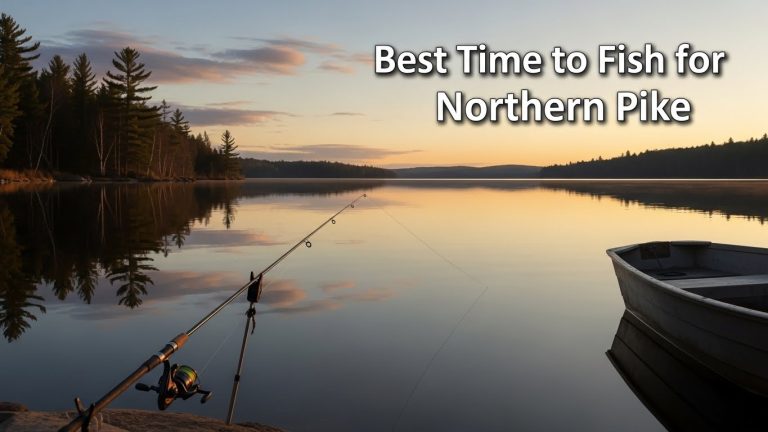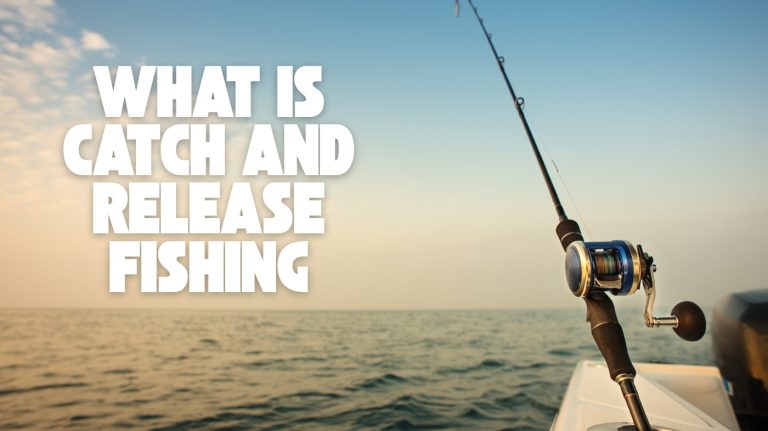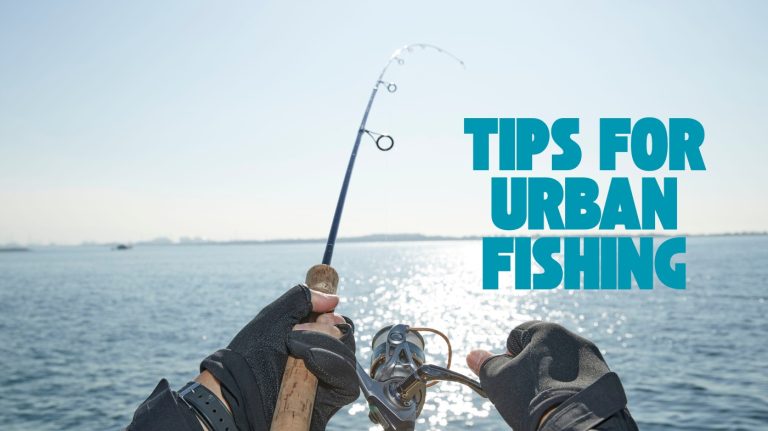What Do Trout Eat in the Winter? Key Insights for Anglers
In winter, trout slow their metabolism and focus on conserving energy by feeding primarily on small aquatic insects like midges, mayfly and stonefly nymphs, and caddisfly larvae.
They also consume crustaceans such as shrimp and crayfish, plus small fish like minnows when available.
Surface feeding drops sharply as they shift to sub-surface prey in slow, deep waters.
Their diet and behavior adapt to water temperature, light, and predator presence, factors that shape their winter survival strategies and feeding patterns.
Key Takeaways
- Trout primarily consume aquatic insects like midges, mayfly, stonefly nymphs, and caddisfly larvae during winter.
- Small fish such as sticklebacks and juvenile minnows become important high-calorie prey in colder months.
- Crustaceans like shrimp and crayfish serve as protein-rich alternatives when insect activity declines.
- Reduced metabolism leads trout to feed on slower, smaller prey in deep, slow-moving waters for energy conservation.
- Surface feeding decreases; trout focus on underwater prey drifting near the substrate in oxygen-rich, sheltered habitats.
Metabolic Adjustments of Trout During Winter
Although water temperatures drop drastically in winter, trout actively adjust their metabolic rates to cope with the cold. Their metabolism decreases roughly by half for every 10°C decline, markedly reducing energy requirements. This metabolic suppression allows you, as a trout, to consume less food during scarce, harsh conditions.
Despite this, individual metabolic rates remain consistent across seasons, demonstrating a physiological stability even during starvation. Trout relocate to areas of minimal current to conserve energy, often choosing deep, slow pools that provide shelter and reduce the need for movement. To maintain efficiency in these environments, trout may reduce activity and avoid unnecessary movements to prevent wear on their felt-like tissues.
By lowering your metabolic rate, you reduce activity levels and conserve fat and glycogen reserves, optimizing energy use. Genetic adaptations in northern populations enhance cold tolerance and metabolic efficiency, while physiological shifts adjust oxygen consumption and antioxidant defenses. These complex metabolic adjustments are essential for your survival through prolonged cold periods with limited food availability.
Key Aquatic Insects Consumed by Trout
When winter temperatures drop and many aquatic insects reduce their activity, trout continue to rely heavily on specific insect groups that remain available in cold conditions.
Midges dominate trout diets, active throughout winter and accessible in larvae, pupae, and adult stages within slow-moving waters. Their prevalence makes them critical in winter fly fishing. This seasonal feeding behavior reflects the trout’s adaptive strategy rooted in the history of angling techniques emphasizing bait presentation.
You’ll also find trout feeding on mayfly and stonefly nymphs, which persist in substrates despite minimal adult emergence.
Caddisfly larvae and pupae remain present, drifting in cold waters and offering a consistent food source, while their cases provide camouflage.
Each of these insect groups thrives in oxygen-rich, clean water, aligning with trout habitat preferences.
Understanding their seasonal availability and behavior helps explain trout winter foraging patterns and informs effective angling strategies targeting these critical aquatic insect prey.
Role of Small Fish and Crustaceans in Winter Diet
You know, during winter, trout really change things up when it comes to what they like to eat. They start focusing more on small fish and crustaceans. Why? Well, it’s mainly because these options pack a higher caloric punch and are usually easier to find. Cutthroat trout are especially known to consume smaller fish opportunistically, including sticklebacks and salmon eggs, particularly during winter months, which helps them maintain energy.
If you’re into fly fishing, this is good news for you! Effective imitation patterns that mimic these prey can really up your game.
Trout are pretty opportunistic feeders, especially when it comes to slow, deep waters in the colder months. They prefer deep, slow water where they can conserve energy while feeding. This behavior aligns with their feeding behavior and diet adaptations to colder temperatures.
Prey Preferences
Because trout adjust their diets based on prey availability, small fish and crustaceans become essential components during winter months when insect activity declines. You’ll notice larger trout often switch to consuming smaller fish, such as minnows or juvenile mullet, capitalizing on their high energy content to maintain metabolism in cold water.
The presence of mullet as bait fish is especially critical for trout in winter, as they seldom move far from these primary food sources. Crustaceans, including shrimp and crayfish, serve as protein-rich alternatives, especially in habitats where aquatic insects are scarce. The variation in prey availability can be influenced by environmental factors such as water temperature and habitat type, which affect trout’s feeding strategies and their need for energy-dense food.
Consider these key prey preferences:
- Small fish dominate diets where abundant, with trout ambushing stragglers from schools.
- Crustacean consumption varies by habitat but remains vital in lakes and estuaries.
- Seasonal shifts direct trout to focus on the most accessible, energy-dense prey, optimizing survival during reduced winter activity.
Understanding these dynamics helps you predict trout feeding behavior in winter.
Effective Imitation Patterns
Although winter reduces insect availability, trout continue to rely heavily on small fish and crustaceans. This makes effective imitation patterns essential for successful angling. Trout often prey on small fish like sculpins and minnows, which remain active and accessible despite colder temperatures. Using slow retrieves and natural lure actions can help mimic these prey’s subtle movements and improve your presentation with lure presentation techniques.
You’ll want to use patterns like the Clouser Minnow or Bow River Bugger to mimic small fish such as minnows, sculpins, and juvenile mullet. Focus on natural colors and slow, subtle movements to match winter baitfish behavior.
For crustaceans, select scud patterns or pink sow bugs that replicate freshwater shrimp and crayfish. Emphasizing textured materials helps simulate segmented bodies and appendages.
Incorporating a range of sizes and using sinking or intermediate sinking flies helps reach trout feeding depths. By accurately imitating these prey, you increase your chances of enticing trout that conserve energy by targeting slow or vulnerable fish and crustaceans throughout the colder months.
Surface Versus Sub-Surface Feeding Habits
When winter reduces insect hatch activity, trout adjust their feeding strategies by shifting focus from surface to sub-surface prey.
Surface feeding sharply declines, with trout targeting scarce terrestrials like ants and beetles that briefly linger on the water.
During winter, trout rarely surface feed, focusing on fleeting terrestrials like ants and beetles.
Instead, they primarily feed underwater where aquatic nymphs, larvae, and crustaceans abound. During this season, trout tend to move to shallower depths compared to summer, making them more accessible to anglers. Using polarized sunglasses can help anglers spot trout more effectively in these conditions.
Key differences include:
- Prey availability: Sub-surface nymphs and daphnia dominate, while surface insects are limited and sink quickly.
- Feeding behavior: Sub-surface feeding is more constant and energy-efficient, relying on keen vision and lateral line detection.
- Habitat use: Trout hold in deep pools and slower waters optimizing sub-surface foraging, only occasionally breaking the surface.
Understanding these habits helps you better anticipate trout’s winter feeding zones and select effective fly patterns.
Impact of Water Temperature on Feeding Activity
As water temperatures drop, trout slow their metabolism considerably. This directly affects their feeding activity and energy expenditure. Below 40°F, their metabolic rate decreases, prompting energy conservation through reduced movement. Polarized lenses with contrast enhancement can help anglers spot trout more easily during these slower feeding periods.
They become selective, feeding on smaller, slower prey like nymphs and midge larvae. You’ll notice trout feed less frequently and prefer food requiring minimal effort to catch. They often remain stationary in deep pools or slow currents to conserve energy. Trout also tend to seek out deeper, slower-moving pools where energy expenditure is minimized.
As temperatures approach 40°F and rise into the mid-40s°F, their metabolism increases. This stimulates more active feeding and broader prey selection. Understanding this temperature-dependent behavior helps you anticipate trout feeding patterns.
Focusing efforts on slow, deep presentations and targeting subsurface insects aligns with their cold-water dietary adaptations. Using amber or copper lenses can enhance underwater visibility depending on light conditions, improving your chances to detect feeding trout.
Influence of Sunlight and Weather on Foraging
You’ll notice that trout really ramp up their feeding during the day, especially in those sunny spots where midges are buzzing around. It’s fascinating how weather plays into this too. The influence of drag system performance in fishing gear can affect how anglers approach these feeding periods.
On overcast days, when the light is low, it creates a perfect foraging environment for them. This kind of weather helps lower thermal stress and keeps oxygen levels stable. Trout often hold in pods within deep pools or near structure, where they can efficiently intercept drifting food in these calmer conditions (fish behavior).
Sunlight Effects on Feeding
Although winter sunlight is limited, its intensity and angle critically shape trout feeding behavior by influencing both habitat selection and metabolic activity. Using fluorocarbon leader can improve presentation in these low-light conditions for anglers targeting trout.
You’ll notice brown trout avoid bright light, seeking deeper shadows created by low sun angles for cover and efficient feeding. Their metabolism slows in cold water, so conserving energy in shaded, slow-flowing zones is essential.
To optimize your understanding, consider these key points:
- Trout prefer shaded habitats under low-angle sunlight to reduce stress and enhance ambush feeding.
- Brief sun exposure during cold, dim days can trigger increased feeding activity near slow currents.
- Trout adjust feeding posture and location based on light intensity, favoring softer, diffused light to maximize energy intake.
Additionally, fish tend to congregate in deep holes below riffles during winter, where shaded conditions and slower currents provide ideal feeding spots.
Weather Impact on Activity
When water temperatures drop below 45°F, trout metabolism slows considerably, causing them to conserve energy by reducing movement and feeding frequency.
You’ll notice trout retreating to deeper, slower pools where energy expenditure is minimal. During winter, trout may also move to faster riffles near feeding windows to take advantage of available food in faster currents. Measuring water temperature at different depths can give insight into where trout are likely to be.
Weather conditions further influence their activity; for instance, light rain can cool surface waters and increase oxygen levels, prompting more active feeding.
Overcast skies with moderate temperatures often keep trout in shallower zones, enhancing your chances of success.
Conversely, high barometric pressure usually drives trout deeper with reduced feeding, while falling pressure ahead of storms stimulates increased foraging.
Sudden weather shifts can force trout to move or alter feeding intensity, so you’ll need to adapt your tactics accordingly.
Common Winter Food Sources in Different Habitats
Since trout inhabit diverse aquatic environments during winter, their food sources vary markedly across habitats.
In cold-water lakes, you’ll find trout feeding primarily on zooplankton and small fish, exploiting the relatively stable conditions beneath ice cover.
Riverine trout rely heavily on insects and crustaceans drifting in currents or sheltering near submerged structures. These fish often seek habitats with woody debris and root structures that support food availability.
Beaver ponds offer a combination of insects and small fish, providing a diverse and consistent food supply.
Consider these key habitat-specific food sources:
- Cold-water lakes: Zooplankton, small fish, larvae, and eggs under ice cover.
- Rivers: Insects, crustaceans, and benthic organisms near rocks and logs.
- Beaver ponds: Mixed diet of insects and small fish due to stable conditions.
Adaptations in Trout Behavior to Avoid Predators
To survive winter’s challenges, trout adapt their behavior to minimize predation risk while conserving energy. They reduce swimming activity and slow metabolism, decreasing chemical and acoustic signals that predators detect.
You’ll notice trout select deeper, slower waters with abundant cover like submerged logs and cobble. This provides physical shielding and obscures their silhouette. Their coloration dulls to silvery hues, blending with muted winter environments, further reducing visibility.
Trout also shift activity patterns, feeding primarily at night or twilight when visually oriented predators are less active. Despite sluggishness, they maintain rapid escape responses triggered by immediate threats. However, predation risk can vary depending on predator presence and environmental complexity, which influences trout survival predator-prey dynamics.
This behavioral plasticity balances energy conservation with effective evasion, enhancing survival during harsh winter conditions while avoiding predation from mammals, birds, and piscivorous fish.
Effective Fishing Techniques for Winter Trout
Although winter trout reduce their activity and metabolism, you can still increase your catch rates by aligning your fishing techniques with their selective feeding habits.
Focus on slow, precise presentations using light tippet (6X fluorocarbon) to avoid spooking trout conserving energy. Prioritize nymphing with generalist patterns like Hare’s Ear or Copper John, and consider tandem rigs to maximize your chances.
Streamer fishing with dead-drifted patterns mimics injured baitfish, appealing to trout opportunistically feeding.
Key techniques include:
- Targeting deep, slow pools near structural cover such as logjams and undercut banks.
- Fishing during peak activity hours (10:00 a.m. to 3:00 p.m.) when trout are more responsive.
- Frequently changing nymph patterns and making multiple drifts through productive zones to prevent trout acclimation.
Frequently Asked Questions
How Does Trout Digestion Change During Winter Months?
During winter, your trout’s digestion slows markedly due to cold temperatures reducing enzyme activity and metabolic rates.
You’ll notice their digestive tract enlarges, especially the pyloric caeca, to maintain digestive capacity despite slowed processing.
Food retention times increase, and nutrient absorption efficiency drops, but enzymatic adjustments, like heightened hexokinase activity, help support energy metabolism.
These changes let trout digest less energy-rich prey while coping with reduced appetite and metabolic demands.
What Is the Average Daily Food Intake of Trout in Winter?
You can expect trout’s average daily food intake in winter to drop markedly, often to about 0.008 grams per gram of body weight per day for brook trout. This intake barely exceeds their maintenance needs, roughly 0.0019 g·g⁻¹·d⁻¹.
For subyearling rainbow trout, consumption averages around 1.9 mg daily, about 3.4% of their body weight, reflecting reduced metabolism and opportunistic feeding during cold months.
Do Trout Store Fat to Survive the Winter?
Imagine a medieval knight preparing for a harsh winter siege. Trout do something similar by storing fat.
Yes, you rely on their stored lipids to survive winter’s scarcity. These fish accumulate significant fat reserves in autumn, which they metabolically conserve as energy during reduced food availability.
The fat’s essential for overwinter survival and reproduction, with lipid depletion directly linked to mortality rates. So, trout’s fat storage is a finely tuned evolutionary strategy.
How Does Ice Cover Affect Trout Feeding?
Ice cover reduces food availability by limiting drifting insects, so you’ll see trout feeding less frequently.
However, the ice insulates water, maintaining oxygen and slightly warmer temperatures, which helps trout stay active.
You’ll notice trout congregate in deeper, calmer waters and may rise under the ice to feed when food is present.
The confined space can increase competition and aggression, subtly altering their feeding behavior during winter.
Are There Specific Minerals or Nutrients Trout Seek in Winter?
You might think trout hunt for a treasure trove of minerals in winter—and they do! They actively seek selenium, copper, phosphorus, magnesium, zinc, and iron to maintain antioxidant defense, bone health, and oxygen transport.
These nutrients are vital as cold reduces feeding and mineral absorption.
Your trout’s survival hinges on balancing these minerals precisely, preventing deficiencies that could cause skeletal deformities or anemia during the harsh winter months.
Stay Ahead of Trout in the Cold Months
As winter chills the water, trout slow their metabolism, selectively feeding like a careful shopper in a sparse market.
You’ll find them targeting aquatic insects, small fish, and crustaceans, adjusting between surface and sub-surface feeding based on temperature and light.
Understanding these behavioral shifts helps you anticipate their movements and improve your fishing strategy.
By recognizing how trout adapt to winter’s challenges, you can approach your angling with precision and success.







